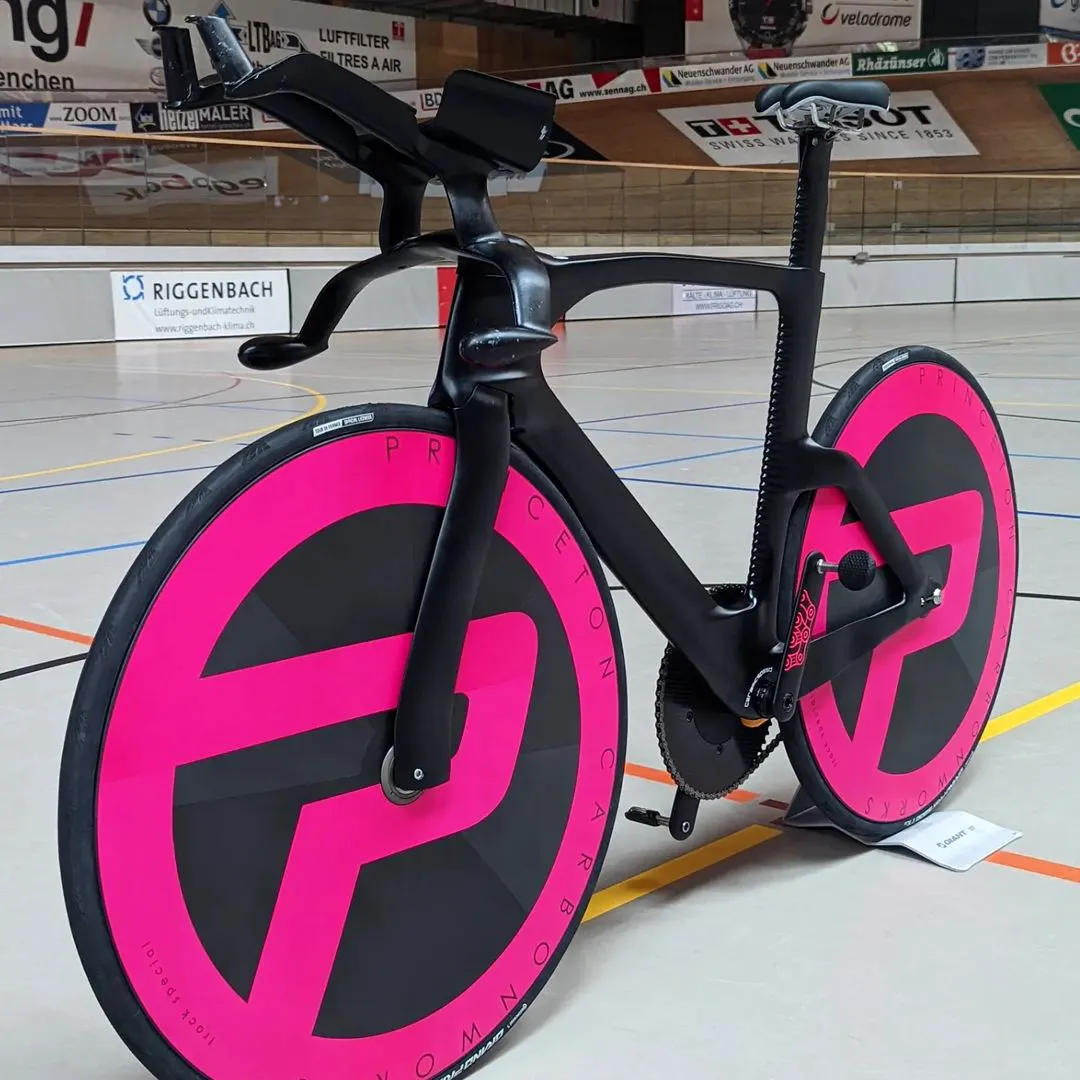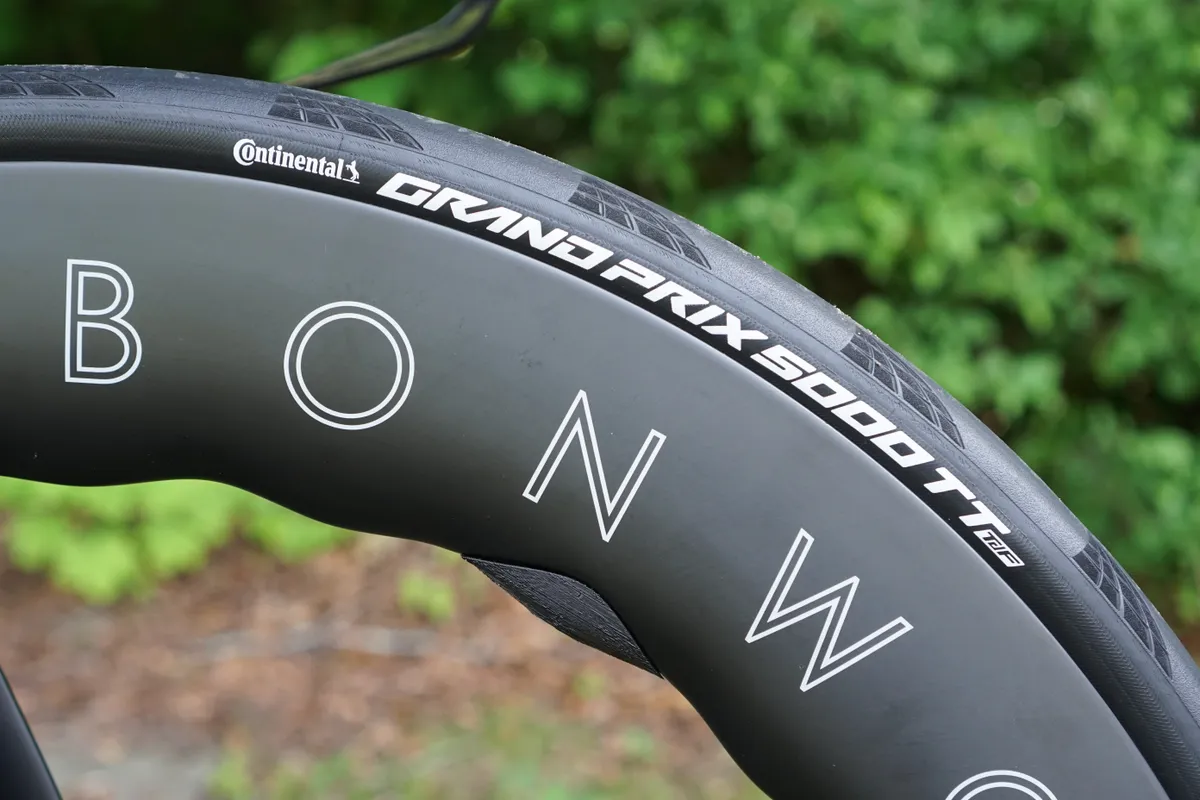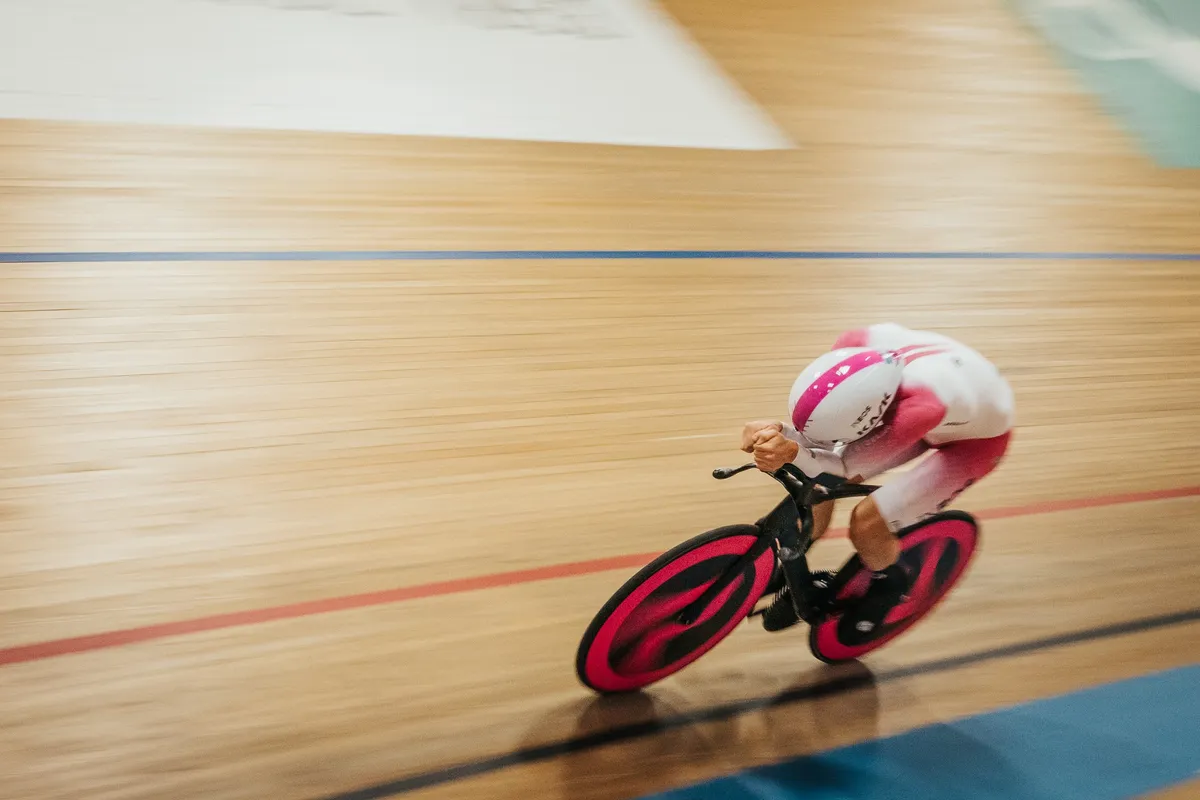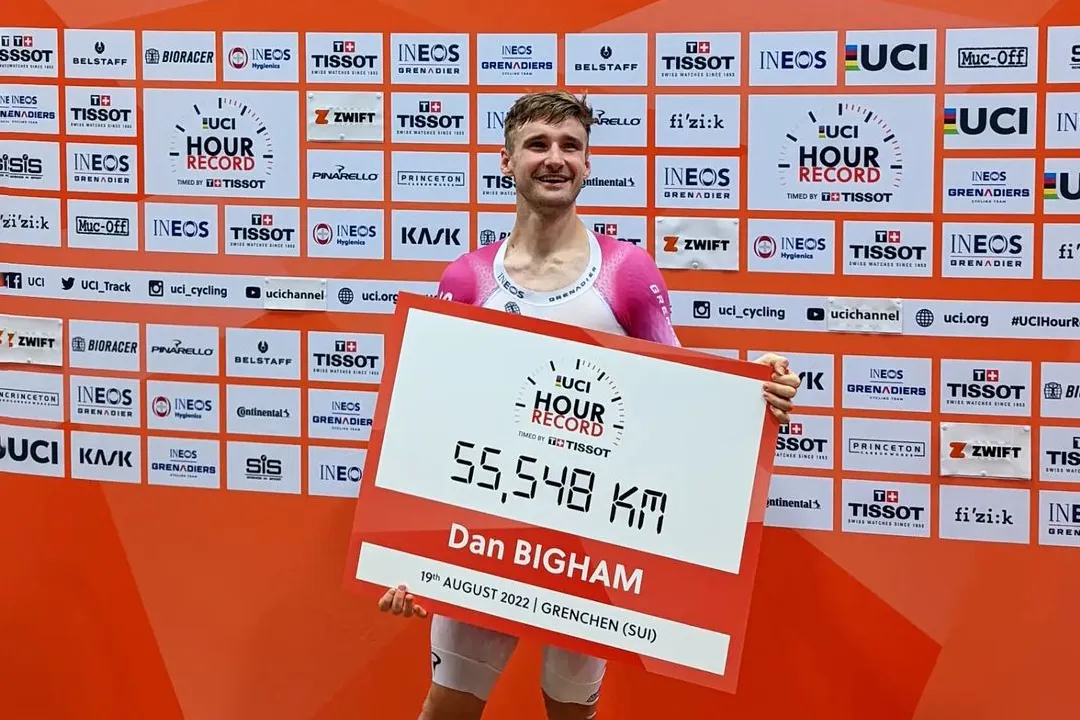Dan Bigham used an unreleased Pinarello that resembles a track-adapted Bolide F in his successful UCI Hour Men’s Record attempt.
The Ineos Grenadiers performance engineer took on Victor Campenaerts’ mark of 55.089km at the Tissot Velodrome in Grenchen, Switzerland.
The 30-year-old is the British Hour Record holder, having beaten Sir Bradley Wiggins’ distance by riding 54.723km on the Swiss track in October 2021.
Bigham reportedly said after that record-breaking ride he would need just seven watts to overtake the Belgian Campenaerts – a WorldTour racer with Lotto Soudal.
Speaking after toppling off his bike in exhaustion, a triumphant Bigham said: “That was my best-paced hour by far. “I was a bit ahead at each split. I had to do 16.0 [second laps] for the second half.
“I haven't ridden 16.0s for half an hour before. It was pretty epic."
“I had an ungodly amount of support from Ineos. Not just in terms of the equipment – I can go on all day about CdA – but in terms of physiology, thermal acclimatisation and nutrition.
“They have stepped up the support and have been second to none."
Modified for the track

Bigham’s bike bears a close resemblance to Team Ineos Grenadiers’ recently unveiled Pinarello Bolide F time trial bike.
This means a swap from the Argon 18 Electron Pro he rode in October.
Incidentally, Bigham’s partner Joss Lowden used that bike to set the UCI Women’s Hour Record. Ellen Van Dijk then surpassed Lowden’s distance on a custom Trek Speed Concept, accumulating 49.254km in May this year.
Unlike when riding for the giant-slaying Huub-Wattbike track team, Bigham’s tech choices were largely from Team Ineos Grenadiers’ sponsors and suppliers.

These include Kask for helmets, Bioracer for clothing, Princeton Carbonworks for wheels and Muc-Off for chain lube.
Bigham told BikeRadar he would wear a Kask Mistral helmet. This continues a trend of Ineos riders using big helmets and visors for aerodynamic purposes seen at the Tour de France.
As a result, Bigham wore a Bioracer Katana skinsuit rather than a Vorteq outfit he wore when setting the British Record.
Bioracer Epic shoe covers went over Nimbl Expect shoes.

He used Princeton Track Specials wheels wrapped in Continental GP5000 TT tyres and fitted a Most Custom 3D basebar and extensions.
Speaking to BikeRadar, Bigham wouldn’t disclose his tyre type or pressure, saying: “I don’t want to give too many secrets away.
“But they will be higher than some people might expect.”
An Izumi Kai chain was lubricated with Muc-Off Ludicrous AF, from another Team Ineos sponsor.
Previously, Bigham used a chain lube developed by his aerodynamics and efficiency consultancy Watt-Shop.
Bigham pushed a 64x14 gear consisting of a WattShop Cratus aero track crankset and Cratus cog, the same ratio he used in his attempt last year.
Since Bigham favours a lower cadence, it’s unsurprising he went bigger than the 61x14 gear Campenaerts turned.
He said he would try to ride a negative split (a faster second half than first) and that the range of cadence possible with this ratio should allow acceleration in the latter stages.

Bigham told BikeRadar that Team Ineos Grenadiers’ plan had always been for him to ride the Hour record again before Filippo Ganna.
But news that the Italian powerhouse’s rescheduled attempt would be on 23 August leaked out and Bigham’s date didn’t. Ganna has since postponed his tilt at the record indefinitely.
The Brit, who has been preparing at altitude in Andorra, said he would try to average between 350 and 360 watts for the hour.
But he declined to give a more exact heart rate or power figure, saying these values depend on form on the day.
In the Hour, riders are not allowed to look at data. They have to rely on indications from track-side coaches to determine whether they are up or down on their target pace.
At 450m above sea level, the Tissot Velodrome is far lower in altitude than the Aguascalientes Velodrome, in Mexico (which sits at 1,900m), where Campenaerts set the current record.
In theory, a higher velodrome can be faster because the lower density of air presents less resistance, despite the lower availability of oxygen.
Atmospheric conditions such as temperature and air pressure also affect air density, with higher temperatures associated with lower density and vice versa for pressure.
Earlier in the week, Bigham said air pressure in Grenchen was on the rise, with the velodrome set to be between 26 and 28 degrees celsius.
Part of his heat acclimatisation strategy, he said, involved four-hour turbo sessions on his balcony in Andorra, wearing what resembles a hazmat suit.
Moreover, Bigham said riding a smart trainer instead of on the road meant he could answer calls and emails while training, performing his day job as Ineos’ watt-saving supremo.

The qualified engineer told BikeRadar he has almost exclusively trained in his time-trial position, even while stationary.
Explaining his choice of location, Bigham said a more accessible track makes logistics easier and that Ganna did not want to do his hour attempt at altitude.
He added that the way the body reacts to altitude is unpredictable, so he declined to take the risk.
